Exploring the Orkney Islands by Motorhome – Scotland 2010
Anyone arriving in Orkney (or indeed the far north-east of Scotland) has to adjust their sense of normality. A named village or hamlet may only consist of a few houses and almost certainly won’t have any shops, pubs or probably any other businesses at all. Even small towns are unlikely to have a full complement of shops and businesses. This isn’t a problem (in fact, it’s quite refreshing, in a strange way), but it does mean that you need to plan ahead a little and adjust your expectations.
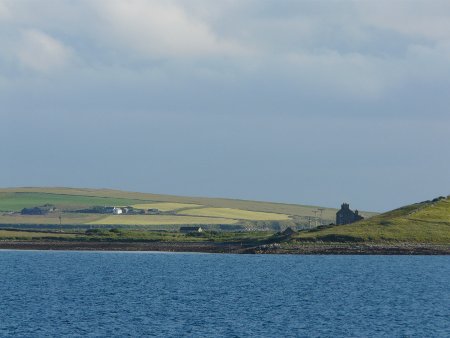

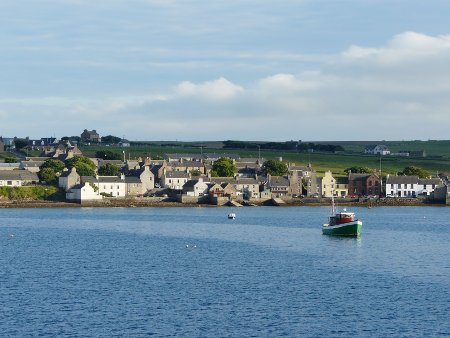
Our arrival was on South Ronaldsay, the southernmost Orkney Island. We only drove a short distance south from the port before finding an excellent viewpoint-cum-layby in which to spend the night, with plenty of space and well off the road. The next day we gradually worked our way up from South Ronaldsay, through the islands of Burray and Glimps Holm (all joined by causeway) to Lamb Holm, a tiny island primarily distinguished as the home of the Italian Chapel.
This impressive building was built by Italian prisoners of war during WWII. The prisoners were employed in helping with the creation of the Churchill Barriers – the causeways that join the islands and prevent access to Scapa Flow from the east. This was the result of a painful lesson learnt in the early weeks of WWII, when a German U-Boat sneaked in from the east and torpedoed and sank the Royal Oak with the loss of 33 lives.
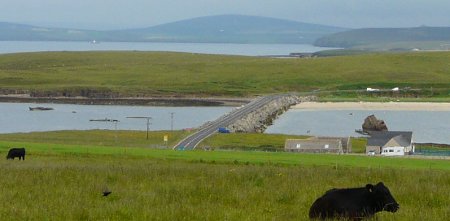
In their spare time, the Italians tried to make their little bit of Orkney a little more like home. The chapel is based on two Nissen Huts placed end to end with a sculpted concrete frontage and a beautifully-painted interior. It’s an extremely accomplished piece of work and I saw several tourists reach out to touch the ‘stone’ walls inside before they realised that the ‘bricks’ were only painted on… Well worth a visit:
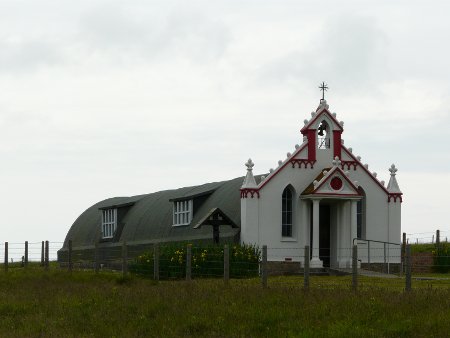
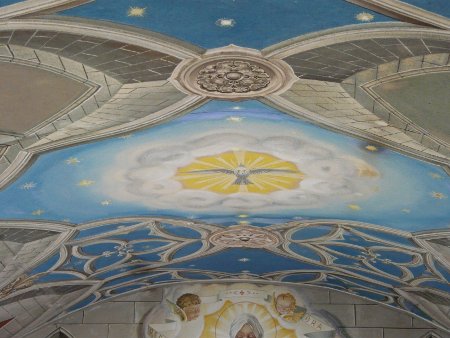
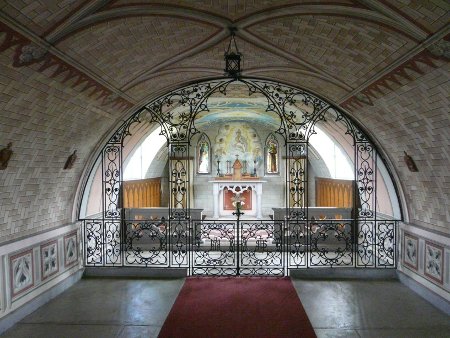
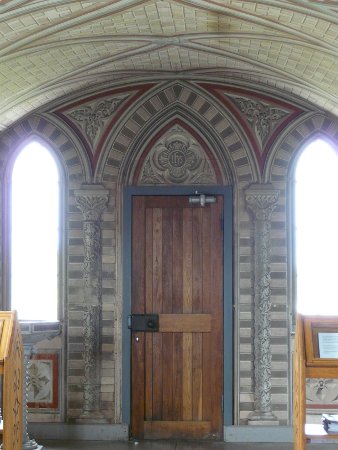
Two of the other main sites (frequented by coach groups but nonetheless interesting) are Skara Brae and the Ring of Brodgar, both on the Orkney mainland. The Ring of Brodgar is Orkney’s answer to Stonehenge and is similarly a mystery to us – no one knows how or why it was used. Skara Brae is far less of a mystery and much more interesting for it.
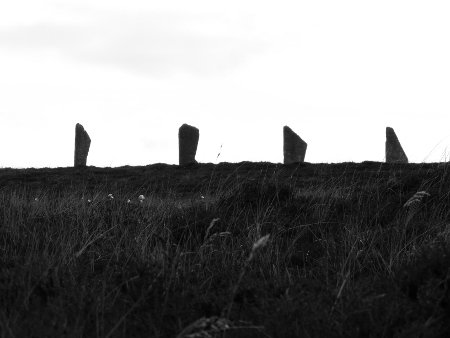
In 1850, an unusually violent storm whipped the top off a sand dune and uncovered the remains of a 5,000 year old Stone Age village that had been buried underground for thousands of years. The village, Skara Brae, was unusually well preserved – down to the original stone box beds, dressers and hearths. It’s run by Historic Scotland (sister organisation to English Heritage) so does cost money but is very interesting and worth a visit. Particularly good is a replica that’s been created of the best-preserved house, enabling you to get inside a house and see how it would have been. Access to the actual remains is restricted to looking but not touching to prevent them being damaged.
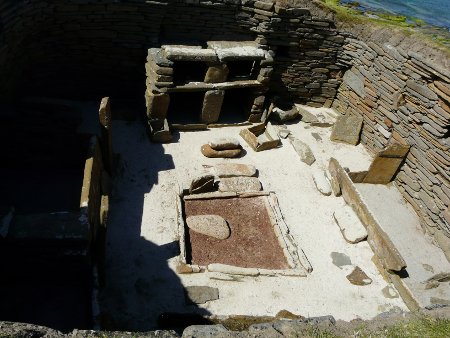
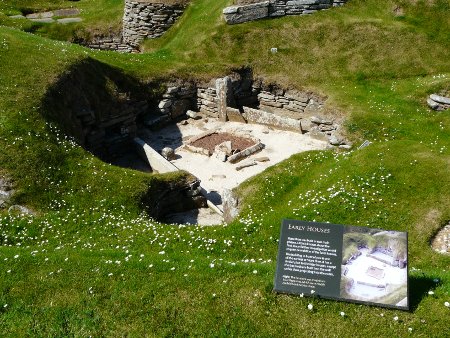
We didn’t visit many other specific attractions on the Orkney mainland but did explore the island thoroughly and marvel at the unspoilt scenery and tranquility of the whole area. Orkney’s two proper towns, Kirkwall (the capital) and Stromness, are pleasant and offer the opportunity to do some (still limited) normal shopping but are not the main reason to visit the islands.
As with most of the more rural areas of Scotland, finding places to park overnight was not difficult, there were virtually no signposted restrictions and most of the locations were very quiet and beautiful.
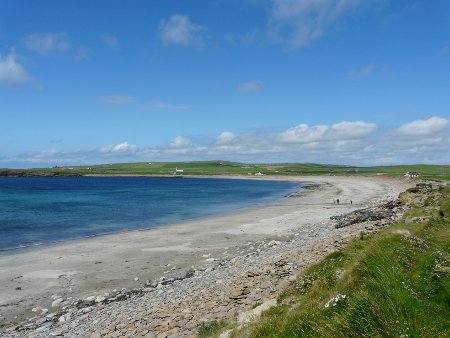
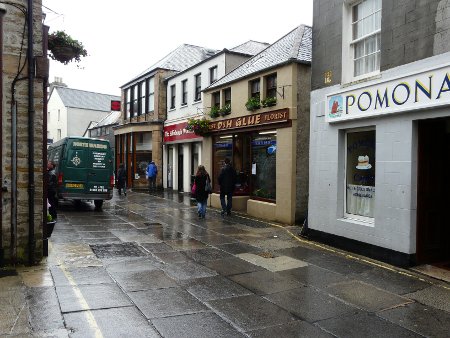
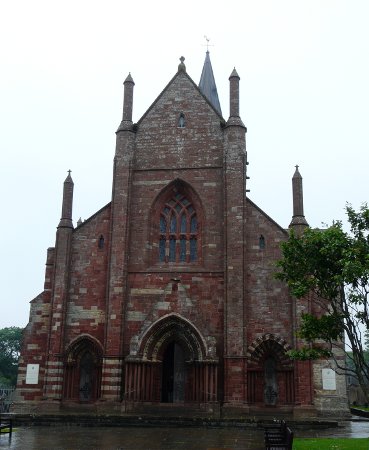

Hi there,
I have thoroughly enjoyed reading about your journey. I am from Australia and am trying to plan a 4 week visit to Scotland/UK from 30th March.
I am a little concerned about hiring a motorhome as I understand the roads in the UK can be narrow and difficult in a large vehicle.
Would you advise a smaller camper van (VW) or do you think a larger motorhome is ok?
Thanks for your great notes of your holiday. It has certainly inspired me.
Cheers
Sue
Hi Sue,
Thanks for your comments, we really enjoyed visiting Scotland last year and have even considered moving up there!
Regarding vehicle sizes, the vast majority of motorhomes in the UK and throughout Europe are coachbuilt motorhomes (i.e. with a caravan-type body). Campervans are in the minority and most motorhome users prefer the comfort of a large vehicle and don’t have problems with the size.
Main roads in the UK are plenty wide enough for any normal motorhome, although they may be a little narrower than you are used to in Australia. Some roads in rural areas are a little narrower but most are two lane and wide enough for even two lorries to pass without slowing. Only in the most rural areas (e.g. Scottish Highlands) will you find that main routes run on single track roads and abnormally narrow two-lane roads, but passing places are provided where necessary and with a little care you should be ok (don’t ignore 6’6″ width restrictions, however, these are real!).
In urban areas, height restrictions can be more of a problem than width restrictions – many town car parks have height barriers that prevent motorhomes or vans entering.
Hope this helps…
Cheers,
Roland